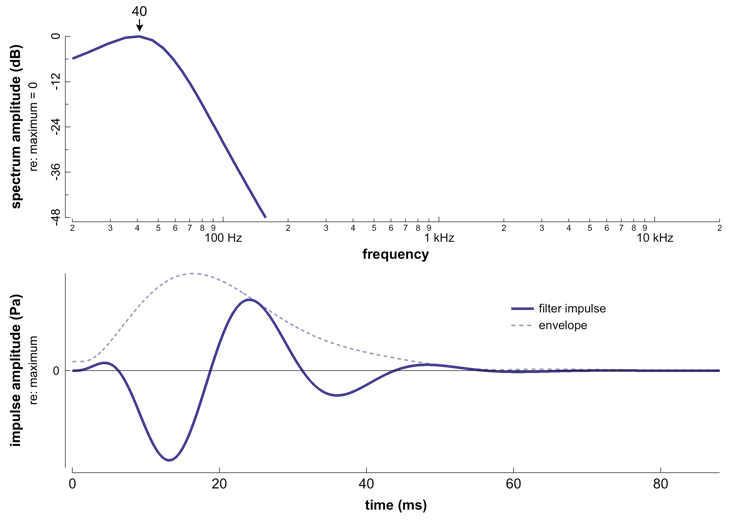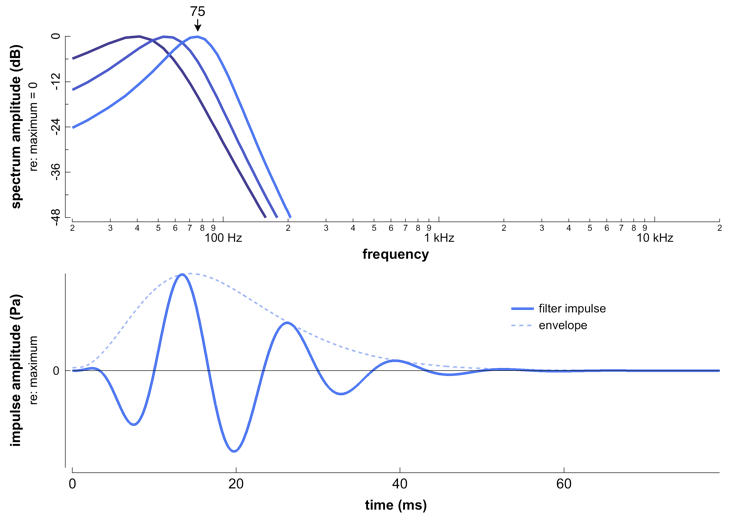Auditory filter banks are designed to simulate the ear’s basilar membrane and auditory nerve response and are therefore fundamental to most models of the auditory system. Designs are also influenced by psychoacoustic studies, such as the ability to detect tones in the presence of masking sounds.
Amplitude spectra (top panel) and impulse responses (bottom panel) for 20 Gammatone filters logarithmically spaced between 40 and 15,000 Hz (adapted from Auditory Toolbox, Malcolm Slaney 1998).
Carrier waveforms and envelopes (left panel) generated by passing a broadband noise-burst (100 ms) through the above bank of 20 Gammatone filters. Impulse responses (right panel) are re-plotted on a time-scale identical to that of the filtered signals.
Amplitude spectra with linear frequency axis showing the extent to which auditory filters broaden with increasing frequency.

Impulse envelope amplitude spectra (left panel) and corner frequencies (right panel) estimated as impulse envelope width-1, measured in seconds at half of maximum linear amplitude.


auditoryfilters.pxp (20 KB) Igor Pro Experiment







































